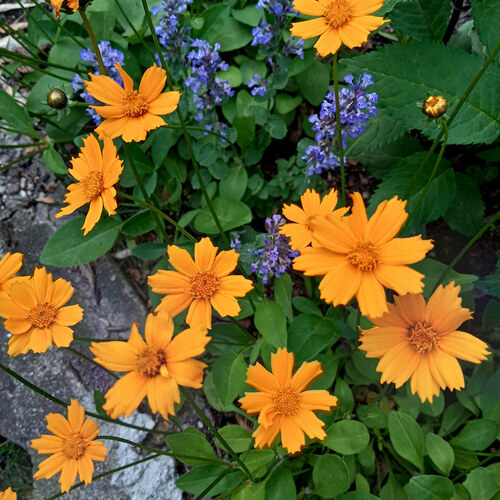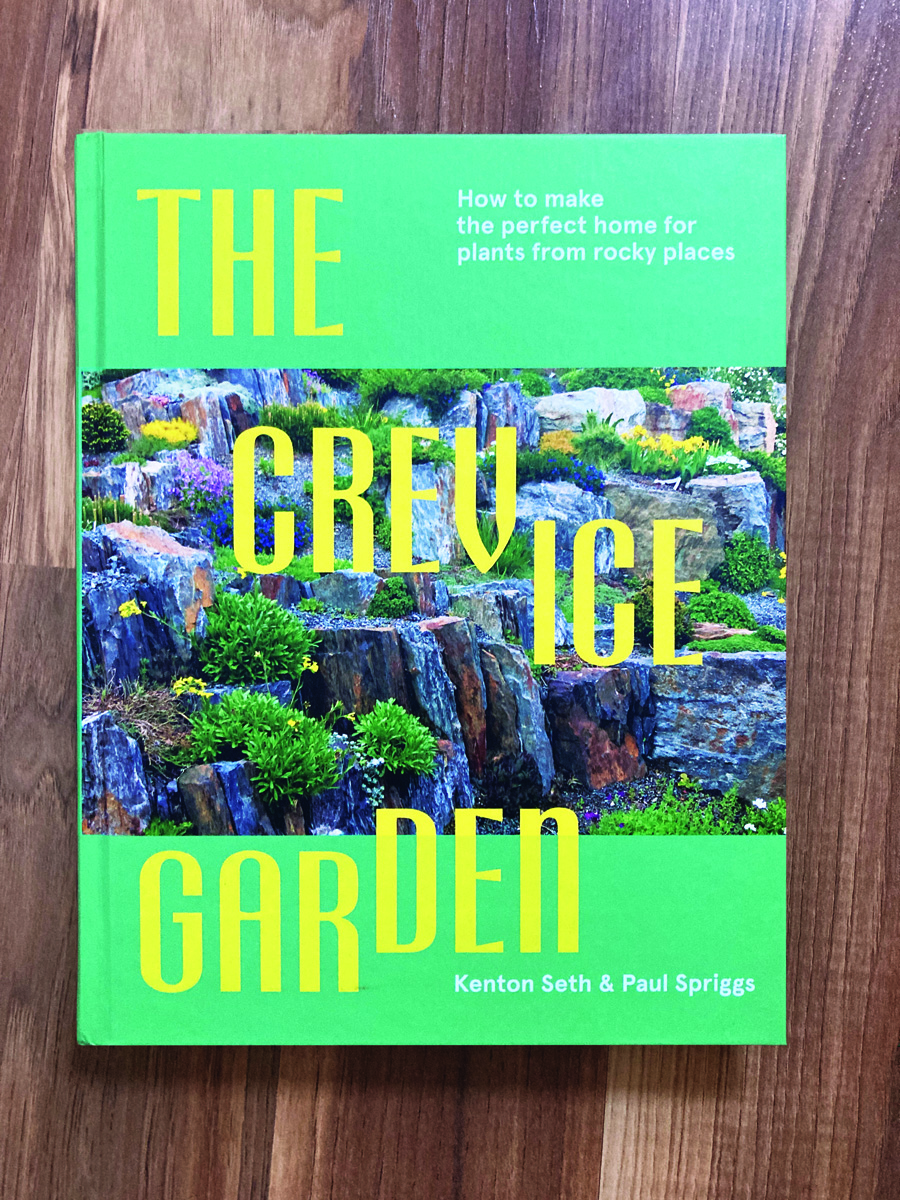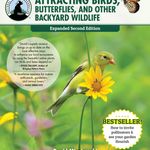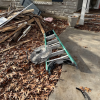
Hi GPODers!
About a month ago, we took a trip across the pond with Cindy Strickland to Sissinghurst Castle Garden in Kent, UK. While I was compiling the assets and writing up that post, I stumbled upon another submission from Cindy that for some reason ended up in the GPOD spam folder. While the reflection on these glorious summer blooms is coming a little later than intended, I didn’t want these colorful photos to go to waste and Cindy gave the OK to share her 2023 annual flower display, today.
Hello, Cindy Strickland here, sharing some favorite summer scenes of a small but chubby triangular side garden that received afternoon sun. I rented the mostly shaded property for two years adding all the plants within the existing border. For 2023, I wanted this little area to be full of a variety of flowers and foliage that I could see from the kitchen windows. The sidewalk was also used as a cut through by neighbors, so other people enjoyed the plants. I saw many birds and insects visit the garden including a wide variety of bees.
 By July, the first flush of coreopsis flowers had about ended, several annuals grown from seed had bloomed, and to keep the look full, I had dropped in some pots of annuals.
By July, the first flush of coreopsis flowers had about ended, several annuals grown from seed had bloomed, and to keep the look full, I had dropped in some pots of annuals.
 Hardy ‘Nana’ coreopsis (Coreopsis auriculata ‘Nana’, Zones 4–9) made a pleasing combination with catmint (Nepeta spp. and cvs., Zones 3–9) – for a while. A friend who is a landscaper laughed when I said my catmint usually dies.
Hardy ‘Nana’ coreopsis (Coreopsis auriculata ‘Nana’, Zones 4–9) made a pleasing combination with catmint (Nepeta spp. and cvs., Zones 3–9) – for a while. A friend who is a landscaper laughed when I said my catmint usually dies.
 Many insects and long-legged arthropods enjoyed the borage blooms. My borage (Borago officinalis, annual) sprawled and eventually flopped or was staked and thinned. Birds ate almost all the seeds.
Many insects and long-legged arthropods enjoyed the borage blooms. My borage (Borago officinalis, annual) sprawled and eventually flopped or was staked and thinned. Birds ate almost all the seeds.
 ‘Nana’ coreopsis is a tough dwarf variety that did not mind being divided in the middle of summer.
‘Nana’ coreopsis is a tough dwarf variety that did not mind being divided in the middle of summer.
 Calibrachoa, a popular annual.
Calibrachoa, a popular annual.
 Cosmos bloomed as catmint waned.
Cosmos bloomed as catmint waned.
 Tough perennial sedum which was divided in the previous autumn, surrounds, and seemingly protected a sunflower seed which went unnoticed by the birds.
Tough perennial sedum which was divided in the previous autumn, surrounds, and seemingly protected a sunflower seed which went unnoticed by the birds.
 Gold yellow zinnia were irresistible to goldfinches!
Gold yellow zinnia were irresistible to goldfinches!
 Lemon thyme (Thymus × citriodorus, Zones 5–8) in pot has a lovely trailing habit and when tweaked gives off a gorgeous scent.
Lemon thyme (Thymus × citriodorus, Zones 5–8) in pot has a lovely trailing habit and when tweaked gives off a gorgeous scent.
 I was lucky enough to find tall verbena (Verbena bonariensis, Zones 7–10) seedlings for sale last spring and planted a lot in various areas including in this little garden. The flowers were magnets for hummingbirds and butterflies. The stems which grew over four feet tall, did not break during strong winds.
I was lucky enough to find tall verbena (Verbena bonariensis, Zones 7–10) seedlings for sale last spring and planted a lot in various areas including in this little garden. The flowers were magnets for hummingbirds and butterflies. The stems which grew over four feet tall, did not break during strong winds.
 Rose turtlehead (Chelone obliqua, Zones 5–9) was one of the last perennials to flower. Cosmic Orange cosmos (Cosmos sulphureus ‘Cosmic Orange’, annual) was probably the last annual to flower (in upper right in this photo). However, it was one of the easiest flower seeds to collect and grow.
Rose turtlehead (Chelone obliqua, Zones 5–9) was one of the last perennials to flower. Cosmic Orange cosmos (Cosmos sulphureus ‘Cosmic Orange’, annual) was probably the last annual to flower (in upper right in this photo). However, it was one of the easiest flower seeds to collect and grow.
Thank you, Cindy, for allowing me to revive this submission lost to the sands of Microsoft Outlook! While I wish we didn’t have to wait so long, late is better than never when it comes to this gorgeous collection of cheerful flowers.
And a great reminder to all that photos don’t necessarily need to be of your current conditions to be timely on the blog! Particularly now, as winter sets in and most of us have less plant life to enjoy outside, getting a glimpse of gardens in summer, spring, and fall of past years is a glorious way to get through cold days. If you have photos to share, follow the directions below to submit your garden to GPOD!
Have a garden you’d like to share?
Have photos to share? We’d love to see your garden, a particular collection of plants you love, or a wonderful garden you had the chance to visit!
To submit, send 5-10 photos to [email protected] along with some information about the plants in the pictures and where you took the photos. We’d love to hear where you are located, how long you’ve been gardening, successes you are proud of, failures you learned from, hopes for the future, favorite plants, or funny stories from your garden.
Have a mobile phone? Tag your photos on Facebook, Instagram or Twitter with #FineGardening!
Do you receive the GPOD by email yet? Sign up here.
Fine Gardening Recommended Products

The Crevice Garden: How to make the perfect home for plants from rocky places
Fine Gardening receives a commission for items purchased through links on this site, including Amazon Associates and other affiliate advertising programs.
A crevice garden replicates the environmental conditions of mountain tops, deserts, coastlines, and other exposed or rocky places on earth. These striking garden features provide perfect conditions for the plants native to these far-off places, bringing the cultivation of these precious gems within everybody’s reach.

Planting in a Post-Wild World: Designing Plant Communities for Resilient Landscapes
Fine Gardening receives a commission for items purchased through links on this site, including Amazon Associates and other affiliate advertising programs.
Featuring gorgeous photography and advice for landscapers, Planting in a Post-Wild World by Thomas Rainer and Claudia West is dedicated to the idea of a new nature—a hybrid of both the wild and the cultivated—that can nourish in our cities and suburbs.

National Wildlife Federation®: Attracting Birds, Butterflies, and Other Backyard Wildlife, Expanded Second Edition (Creative Homeowner) 17 Projects & Step-by-Step Instructions to Give Back to Nature
Fine Gardening receives a commission for items purchased through links on this site, including Amazon Associates and other affiliate advertising programs.
From the National Wildlife Federation, the largest U.S. nonprofit conservation organization, with 6 million members and 51 state and territorial affiliated organizations. 17 step-by-step projects that everyone can do together make getting your family back to nature easy, educational, and fun. Over 200 color photos of backyard wildlife habitats and the wide variety of creatures they attract, plus step-by-step photos and illustrations for family projects. Learn wildlife-friendly practices for gardening, landscape design, supplemental feeders, birdbaths, nesting places, and more. Learn how to attract backyard pollinators, from bees and butterflies to beetles, bats, and hummingbirds
Get your garden certified by the National Wildlife Federation’s Garden for Wildlife(TM) program by following the included certification application checklist.









